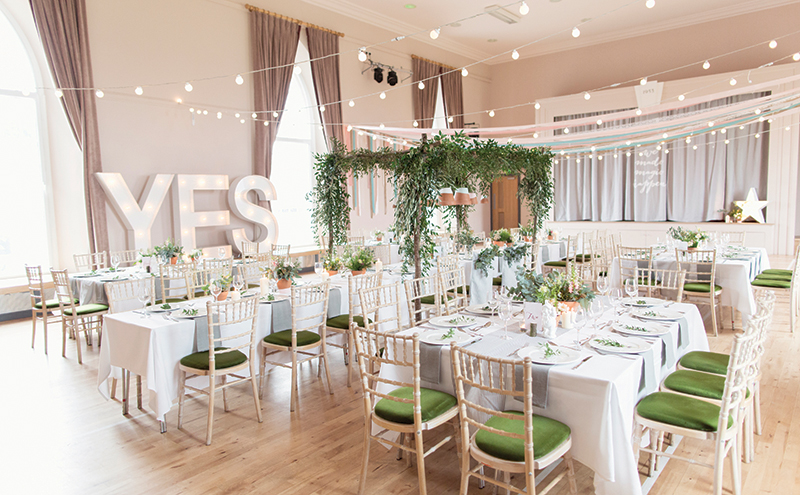It might be a bit more graft, but a sparsely decorated venue allows you to project your personalities onto your big day like nowhere else
Venues come in all shapes and sizes but the one you choose will depend on how you envisage your w-day surroundings. For some, a highly personalised blank canvas is essential. With a clean slate, your hand-sewn bunting won’t clash with the gilded wallpapers, or the hip monochrome and neon-flash palette won’t fight against the rich tones in the grand ballroom. If you’re up to the challenge, here’s our favourite blank canvas venues:
Comrie Croft, Crieff

As its name suggests, Perthshire’s Comrie Croft is a rural spot. “Comrie dates back to the 1800s, when it was a small farm called Braincroft,” explains the venue’s Amanda Lees. “In 2008, members of the local community bought it and word got out about how idyllic the setting was for weddings.” It’s part of a huge estate of fields and woods, and couples can marry and hold a reception in the rustic barn and cow shed.
The scope these offer for decorating can feel overwhelming, but bear in mind that even the simplest touches make an impact. “These are classic blank canvases,” says Amanda. “They look amazing whether decorated with a few hay bales and some fairylights or professionally done – all you need is some creativity and lots of enthusiasm.”
Crear, near Tarbert


Crear, on the Kintyre peninsula, has its roots in the creative arts – what better source of inspiration for your wedding crafts? “An old farm steading that was renovated as a space to create, Crear has had some incredible talent through its doors, including artists, writers, dancers and musicians, such as The Editors and Travis,” reveals Crear’s Amanda Hudson.
“When a couple of musicians working at Crear asked if they could marry here, that was the beginning of Crear Weddings.” Set your sights on the main studio, where you can work your magic on its rafters, spiral staircase and white walls.
Killearn Village Hall, near Stirling


Village halls are nearly always understated and unpretentious, and many benefit from lush rural settings. That’s the good news. The bad is that few of them have been modernised. Killearn Village Hall is one of the lucky ones. “It underwent an extensive renovation in 2013,” explains Nichola Reith, one third of cake-making specialists Three Sisters Bake, who are based at the venue.
“Since then, we have seen the hall transformed – given a Midsummer Night’s Dream theme, turned into an indoor garden with foliage and dark-green velvet, and, my favourite, as an autumnal hunting lodge for a November wedding.” The standard has been set high, so dip into the venue’s store of props for hire. “Each piece is tailored to fit the hall and includes floral bunting, hurricane vases, festoon lighting and much more.”
SWG3, Glasgow


This complex of venues close to Glasgow’s Riverside Museum has a surprising past. “The building was a former tobacco bond and had been derelict since the early 1980s before it was taken over 12 years ago,” explains SWG3’s Mutley. “Now, its various spaces can be broken up with lighting.”
Choose between the photography studio (in which ceremonies can be held), the gallery, the Poetry Club, the warehouse itself (which can seat up to 220 guests) and the TV studio (which can stretch to a whopping 400). Best of all, you can take full advantage of the fact that SWG3’s core business is music-related – the audio equipment is golden.
The Byre at Inchyra, Perthshire


Lady Caroline first began running Inchyra House with her husband, Lord James, in 2002, but it wasn’t until ten years later that the pair spotted the potential of the Byre. “We set our sights on the dilapidated yet promising byre behind the house, built for cattle in 1877,” she remembers. “After six months of mucking out, the first private party was held.” It was so successful, heavy-duty renovations were soon underway, resulting in the characterful wedding venue it is today.








